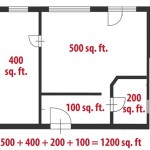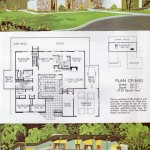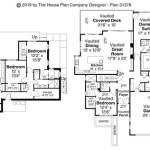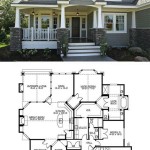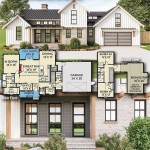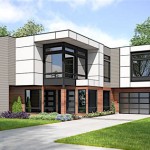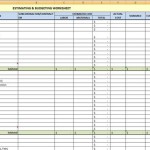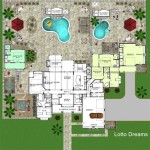Plans for Tiny Houses on Wheels: A Guide to Designing Your Dream Home
The tiny house movement has gained immense popularity in recent years, with many people seeking a simpler and more sustainable lifestyle. Tiny houses on wheels offer a unique and appealing way to experience the freedom of mobility and the benefits of downsizing. Choosing the right plans for your tiny house on wheels is crucial, as it impacts the design, functionality, and overall living experience. This article provides a comprehensive guide to planning your tiny house on wheels, addressing key considerations and offering insights for a successful project.
1. Determine Your Needs and Priorities
Before diving into the design process, it's essential to assess your individual needs and priorities. Consider your lifestyle, the activities you enjoy, and the number of people who will occupy the space. Are you a minimalist who values simplicity or do you need to accommodate a family? Do you travel frequently or prefer a more stationary lifestyle? Answering these questions helps define the essential features and amenities for your tiny house.
For instance, if you're a remote worker, you may need a dedicated workspace with ample natural light and storage. If you enjoy cooking, a well-equipped kitchen with ample counter space is crucial. Similarly, if you entertain guests often, a comfortable living area with a sleeper sofa may be desirable.
2. Choose a Design and Layout
With your needs defined, it's time to explore different tiny house designs and layouts. Numerous resources are available online and in books, showcasing a wide range of styles, from modern and minimalist to rustic and traditional. You can find pre-designed plans or work with an architect or designer to create a custom layout tailored to your specifications.
Consider these factors when selecting a design:
- Floor plan arrangement: Optimize space by strategically placing essential areas like the kitchen, bathroom, bedroom, and living space. Efficient use of vertical storage and multi-functional furniture is key.
- Ceiling height: Aim for a minimum ceiling height of 7 feet to create a comfortable and spacious feel, especially in the living area.
- Window placement: Maximize natural light and ventilation by strategically placing windows on all four sides of the house whenever possible.
- Exterior design aesthetics: Choose a style that reflects your personal taste and compliments the surrounding environment.
3. Consider Building Materials and Construction Techniques
The choice of building materials and construction techniques significantly impacts the cost, durability, and sustainability of your tiny house. Common materials include:
- Wood: A traditional and versatile material, it offers excellent insulation and aesthetic appeal. It's also relatively easy to work with.
- Steel: Provides strength and durability, making it suitable for harsh weather conditions. Steel can be more expensive than wood but offers greater longevity.
- Composite panels: Combine wood with other materials for improved structural integrity and moisture resistance. They are often used for walls and roofs.
Construction techniques range from traditional framing to panelized construction. Each method has its advantages and disadvantages, so choose the option that best suits your skills and budget. Consider consulting with an experienced builder for advice and guidance.
4. Plan for Utilities and Systems
Integrating utilities and systems is crucial for a functional tiny house on wheels. Carefully plan the placement of plumbing, electrical, and heating/cooling systems. It's essential to ensure these systems meet local regulations and codes.
Consider:
- Water source: Choose between a gravity-fed tank, a pump system, or a connection to a municipal water supply.
- Wastewater disposal: Consider a composting toilet, a grey water system, or a connection to a sewer system.
- Electrical system: Plan for solar panels, a generator, or a connection to an electrical grid.
- Heating and cooling: Opt for energy-efficient systems that meet your needs and budget.
5. Ensure Compliance with Regulations
Before construction begins, research and understand local regulations for tiny houses on wheels. These regulations may vary depending on the state and municipality, and cover aspects such as size, weight, towing capacity, and accessibility.
Some considerations include:
- Vehicle registration and licensing: Ensure your tiny house meets the requirements for registration as a recreational vehicle or trailer.
- Building codes: Adhering to building codes ensures safety and structural integrity. Consult with a local inspector for guidance.
- Zoning regulations: Understand the zoning regulations for the areas where you plan to park your tiny house on wheels.

224 Sq Ft Tiny House On Wheels By Living Homes Diy Small

Escape Traveler A Tiny House On Wheels That Comfortably Sleeps 6 Floor Plans

Tiny House Floor Plans 32 Home On Wheels Design

Design A Tiny House On Wheels Tips And Tools For Diyers

Tiny House Plans The Project

Free Tumbleweed Diy Tiny House Plans Houses

27 Adorable Free Tiny House Floor Plans Craft Mart

How To Pick The Best Tiny House On Wheels Floor Plan Wayward Home

Easy Tiny House Floor Plan Designs
:max_bytes(150000):strip_icc()/ana-tiny-house-58f8eb933df78ca1597b7980.jpg?strip=all)
4 Free Diy Plans For Building A Tiny House
Related Posts

